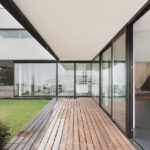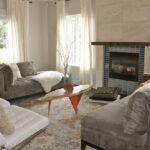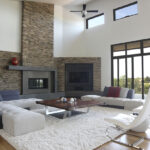Student teaching experience
I love to teach. That cannot be stated strongly enough. I take great joy and satisfaction from this pursuit and I am committed to be the best teacher that I can be. As a teacher it is important for me to give the students the intellect and skills necessary for success in the interior design field. Design is a problem solving process, it is important to enable the students to go beyond the basics, allowing them to think creatively and originally in the application of ‘techné. Design is also a research process involving technical research, case study research and the investigation of various design possibilities or opportunities relative to a contextual situation. As it is contextual, I try to inspire my students to become life-long learners and to continue to seek knowledge long after they leave the classroom. It is important for students to develop a methodology for conceptual thinking. The understanding of the contextual factors that drive decision-making processes is essential to help students begin to look beyond solutions that are comfortable to solutions that are creative and unique. During project development students should develop an understanding of the design process, both from a personal and historical perspective. I provide the students with an historical context, case study research and examples of built work to begin to understand the problem at hand and to explain the process in a manner that allows for flexibility and adaptability. With the ever-changing shape of the profession in practice, flexibility is a necessity and adaptability is critical for students to succeed. A thorough understanding of the design process is the only way to honestly prepare students for the rigors of professional practice.
Design skills cannot be properly learned and understood simply by reading and writing. I design exercises and projects that challenge the students and force them to think conceptually. I believe in active learning; utilizing teaching methods adaptable to different kinds of learners. I employ a variety of teaching methods such as short lectures with visual aids, demonstrations, step-by-step hands-on exercises, discussions, and in progress critiques. As I share technical knowledge and information with the students, I emphasize on developing intellectual skills so as to be able to analyze, criticize, translate, transform and synthesize design ideas with an innovative and creative execution. In the studio I have endeavored to be truly responsive to each student and to each project on their own terms, rather than from some preconceived viewpoint or aesthetic agenda. Part of my effort to respond more individually has involved the improbable goal of ridding myself of a repetitiously personal style and self-consciousness of “signature” design. Admittedly, this in itself has been a very self-conscious struggle, but I am committed to the idea that architecture and design is a craft and a problem- solving process.One of the things that I have learned early on is that design and architecture is not a solitary art. Its inception, design and construction involve many players, from clients to contractors, and they are all in some measure responsible for its success or failure. Architecture and design is certainly a commercial art and, at best a messy one, battered about along the way by decisions from various agencies and intrusive interests in a manner guaranteed to thwart the purist. Oddly, this is one of the reasons I like it. It is born out of constructive compromise, not conceived or created in the moment or in a vacuum, but painstakingly over time in the company of others.
I believe in lifelong learning. I don’t want students to view my classes as something they have to “get through.” Rather, I hope that they will see them as just the start of a process, a journey that will carry them throughout their career. “Creativity” and “artistry” are abstract, thus I emphasize the ‘critique’ where the greatest learning occurs; this is when ideas can be explored, conceptual positions and design choices can be argued, and student understanding can be evaluated. I push all my students to participate in this process, all opinions should be heard and all ideas are discussed. This thoughtful, in-depth analysis is invaluable. It is in the ‘critique’ that students learn to articulate a thought process a leading to a design process, often bringing new insight and creative endeavor.
My exposure to different cultures and being an international student helps me relate with ease to students from diverse backgrounds. It also influenced my passion for design discourse in a globally diverse society. I believe design education should meet the challenges and opportunities of the new millennium, nurturing students by exploring how the physical and social elements join to create spaces infused with aesthetic, social and cultural relevance. I try to approach both artistic and pragmatic situations, thus students are always presented with projects where the form of the outcome is never predetermined. Students will be challenged to identify and articulate the various parameters leading to the appropriate contextual and case study research leading to concept development, to solution and intervention. I believe that properly equipped, students will be better prepared to face the rapidly changing world with lifestyle and social changes implications demanding new design directives. As designers of the future, students should be able to analyze and comprehend ambiguous circumstances and move with relative certainty toward new possibilities.
For as much as I love to teach, I also love to learn; it is that desire for knowledge that above all else, I would hope to inspire.
- Rouben







